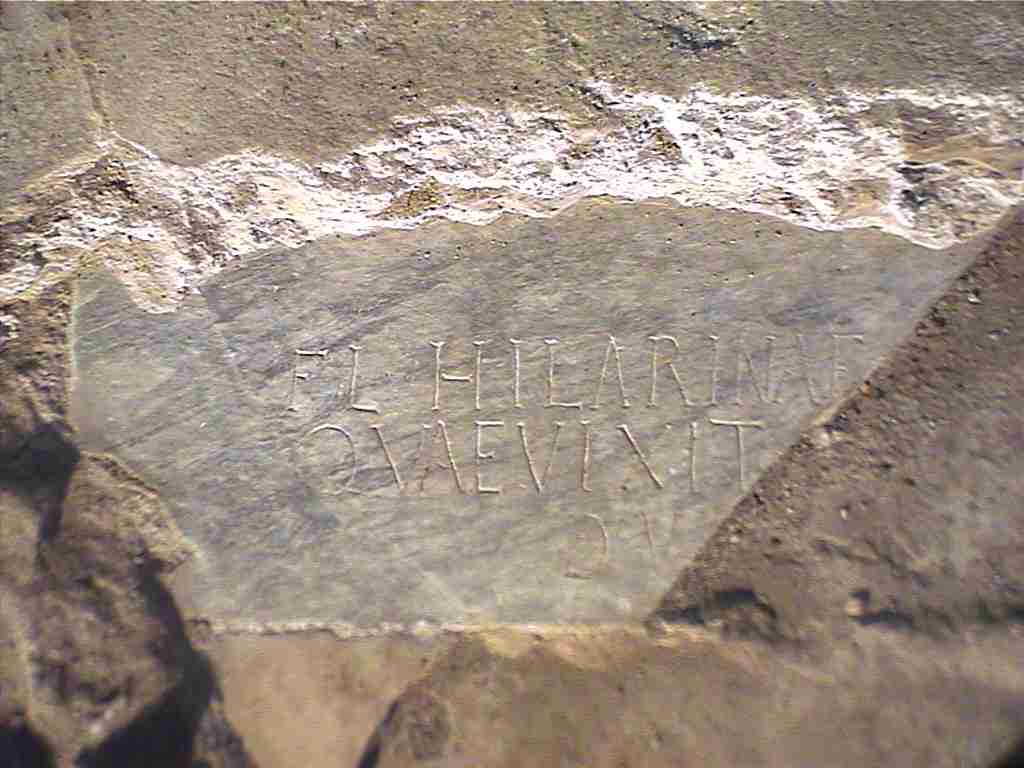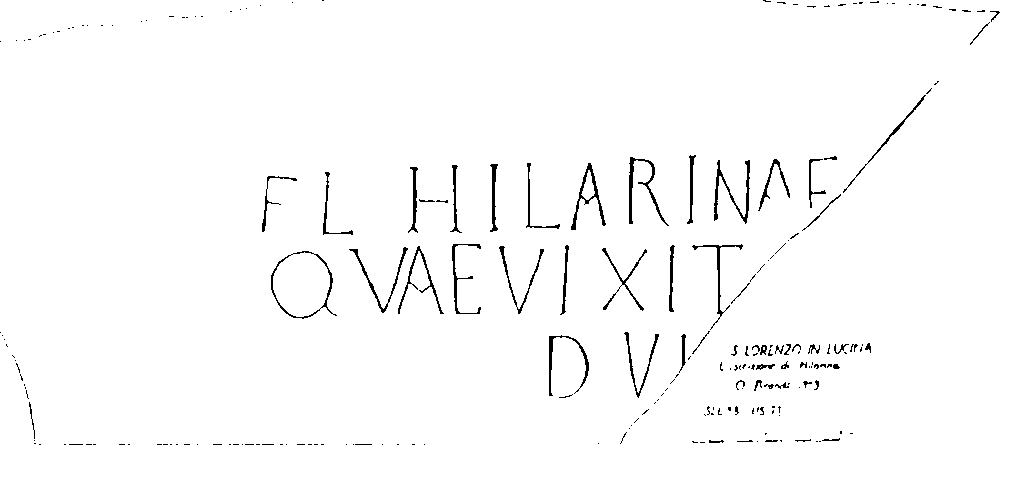Swedish Research in
San Lorenzo in Lucina
(Rome)
- The Transformationsof a Late Antique
Roman Quarter
ROMAN AND
EARLY CHRISTIAN
PHASES
Made by: Olof Brandt
Swedish Institute in Rome
Web page:
http://www.svenska-institutet-rom.org
Via Omero 14
I-00197 Rome, Italy
E-mail: isvroma@vatlib.it
| INSCRIPTIONS | The inscription of Hilarina |
| Inscriptions in San Lorenzo in Lucina | The portico |
| Conservation |
The fourth century funerary inscription of Flavia Hilarina

| Latin text:
Fl(aviae) Hilarinae
The shape of the letters points to a date after the beginning of the fourth century. A "d", time and religion if the "d" stands for "dies", "days", the author of the text carefully indicated the exact length of the life of Hilarina in years, months and days. Ancient funerary inscriptions show that time was very important but in a different way: often no year was indicated. The "d" can also be interpreted as an abbreviation for "deposita", "buried", which is a Christian expression; or as the beginning of the word "dulcis", "sweet". Only if the "d" stands for "deposita" there would be a clear sign of Christianity in the inscription. The empty space in the beginning of the last line shows that the last line probably was symmetrically placed at the centre. This means that there were few words after the "d", which then most probably was the beginning of "dies". If this is correct, there is no explicit sign of Christianity in the text. However, the shape of the slab is exactly that of the tombs, loculi, in the Christian catacombs, and it is extremely probable that Hilarina was a Christian woman. Perhaps her tomb was among the many which were destroyed when the Popes Liberius and Damasus in the second half of the fourth century began to excavate crypts around the tombs of the martyrs in the catacombs. For more details: Olof Brandt, "Un'iscrizione riutilizzata da S. Lorenzo in Lucina", Rivista di Archeologia Cristiana 70, 1994, 197-201. |
